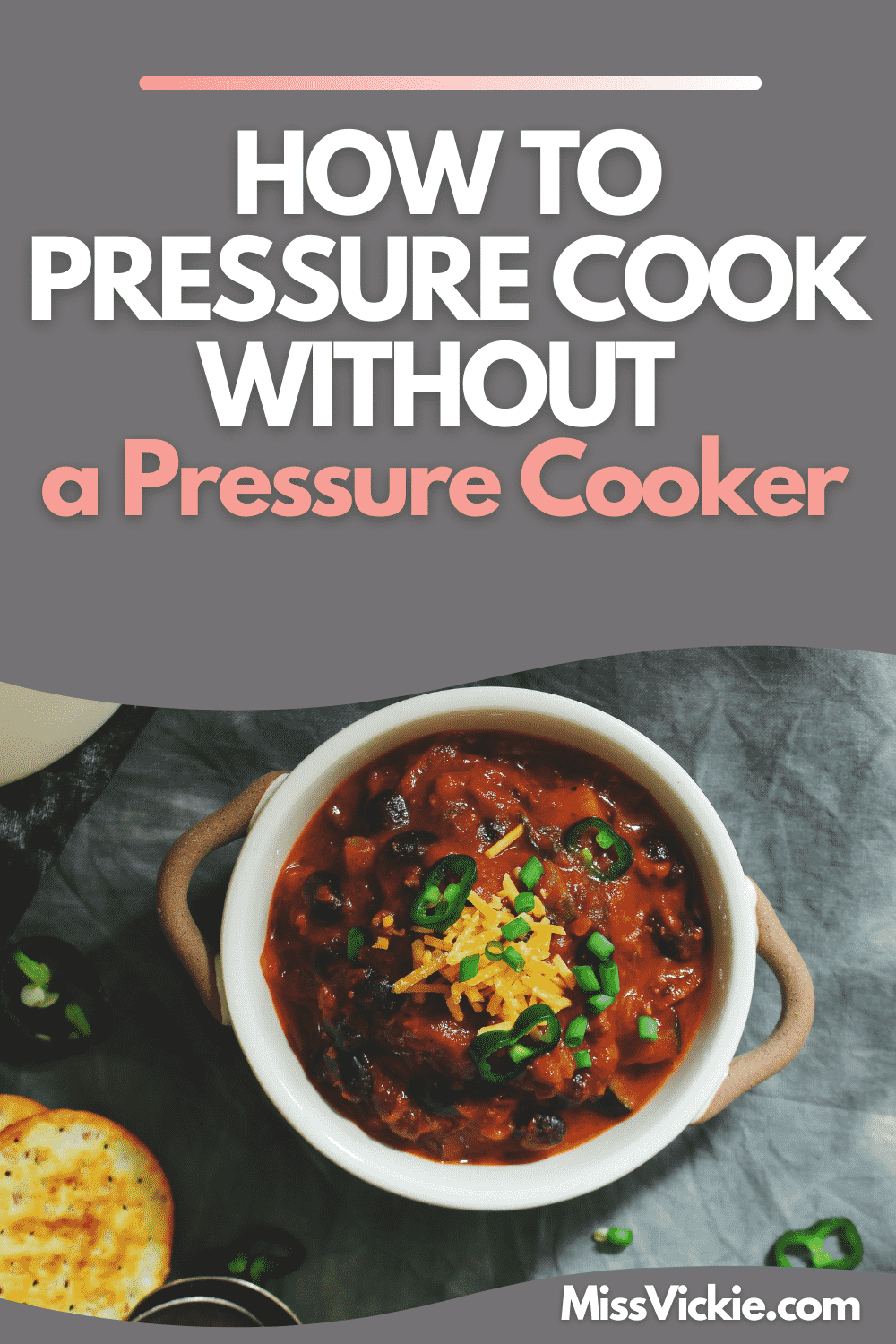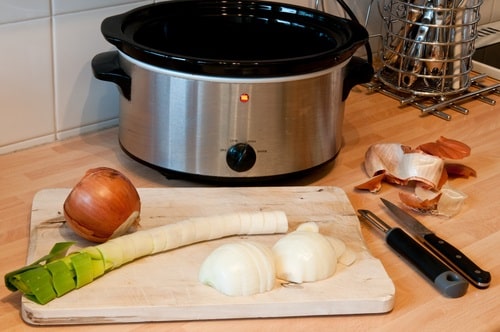
A pressure cooker uses the power of steam to cook food faster than conventional cooking methods. It was invented by a Frenchman called Denis Papain back in the 1600s. He called it “the food digester,” Although his early prototypes were unsafe, the same physics laws are still used in electric pressure cooking today.
A pressure cooker works by boiling water in a sealed unit to create steam under pressure to cook the food at a higher-than-normal temperature. The boiling point is higher in a pressure cooker than can be achieved by simply boiling water in a saucepan, reaching 250 degrees Fahrenheit. Because it is so hot, cooking time is drastically reduced.
In addition, the pressure forces liquid back into the food leading to tender, moisture-rich food. This means that despite the high temperature, your food will not dry out.
Can You Pressure Cook Without a Pressure Cooker?
No, you cannot pressure cook without using a pressure cooker. The early pressure cookers were extremely dangerous, so there is nothing that you can safely fashion on your own out of pots and weights that you may have lying around in your garage or workshop. Please do not even attempt this as it may lead to dangerous burns. The only way to safely pressure cook food is to use a safety-tested, shop-bought pressure cooker.
Of course, there are plenty of other cooking methods available. If it’s the moist tenderizing effect of a pressure cooker that you’re after, consider using a slow cooker. This creates a similar taste experience that doesn’t dry out the meat or casserole.

However, whereas a pressure cooker only takes minutes, a slow cooker will take hours to prepare the same meat dish. It is still pretty effortless, though, as you put all your ingredients into the slow cooker, set the timer, and forget about it for eight hours or so. No supervision is necessary.
A similar alternative method is to use a casserole dish or ovenproof pot with a tight-fitting lid in your oven. Set the oven at a very low temperature and cook the meal overnight or for around eight hours. This method will use more electricity than a slow cooker, however.
Many people love their pressure cookers for softening beans and other pulses. Beans and pulses, of course, can all be cooked conventionally. Still, instead of taking about 15 minutes from start to finish in a pressure cooker, you will probably find you are looking at about 45 minutes or even longer in a conventional pan.
You need to ensure that you pre-soak beans if you are cooking conventionally, or they can be very dangerous for your health. Plus, if you don’t pre-soak, the beans will take many hours of cooking to soften. The usual soaking time is overnight or for at least 8 hours. After soaking, rinse them and cook in a batch of clean water. With a pressure cooker, you can cook dried beans without soaking.
Steam cooking vegetables on the hob can provide similar taste results to vegetables cooked in the pressure cooker. It is quick and straightforward, particularly if you have a proper steamer pot with racks.
If you want a pressure cooker to save time, a microwave oven offers a speedy alternative to a pressure cooker but lacks its versatility. A microwave is ideal if you defrost meat, warming up a meal, or cooking a jacket potato. You can also find microwaves that brown the meat, but they are not easy to use as a pressure cooker.

Most microwave models are pretty basic unless you opt for a top-of-the-range model, which is expensive. However, it is possible to slow-cook a casserole or stew in a microwave with good results. There are recipes online that you can try, such as this one. When microwaving dishes that need long, slow, or pressure cooking, one would usually cook on the “medium” setting, not on “high.”
So, you can use your oven, microwave, hob, slow cooker, or steamer, but none of these offers the same advantages as a pressure cooker. Once you have discovered the ease and convenience of pressure cooking and tasted the results, you will find that your pressure cooker is irreplaceable.
The beauty of a pressure cooker is that it combines the best aspects of all other cooking utensils into one easy-to-use, energy-saving, and relatively inexpensive appliance.